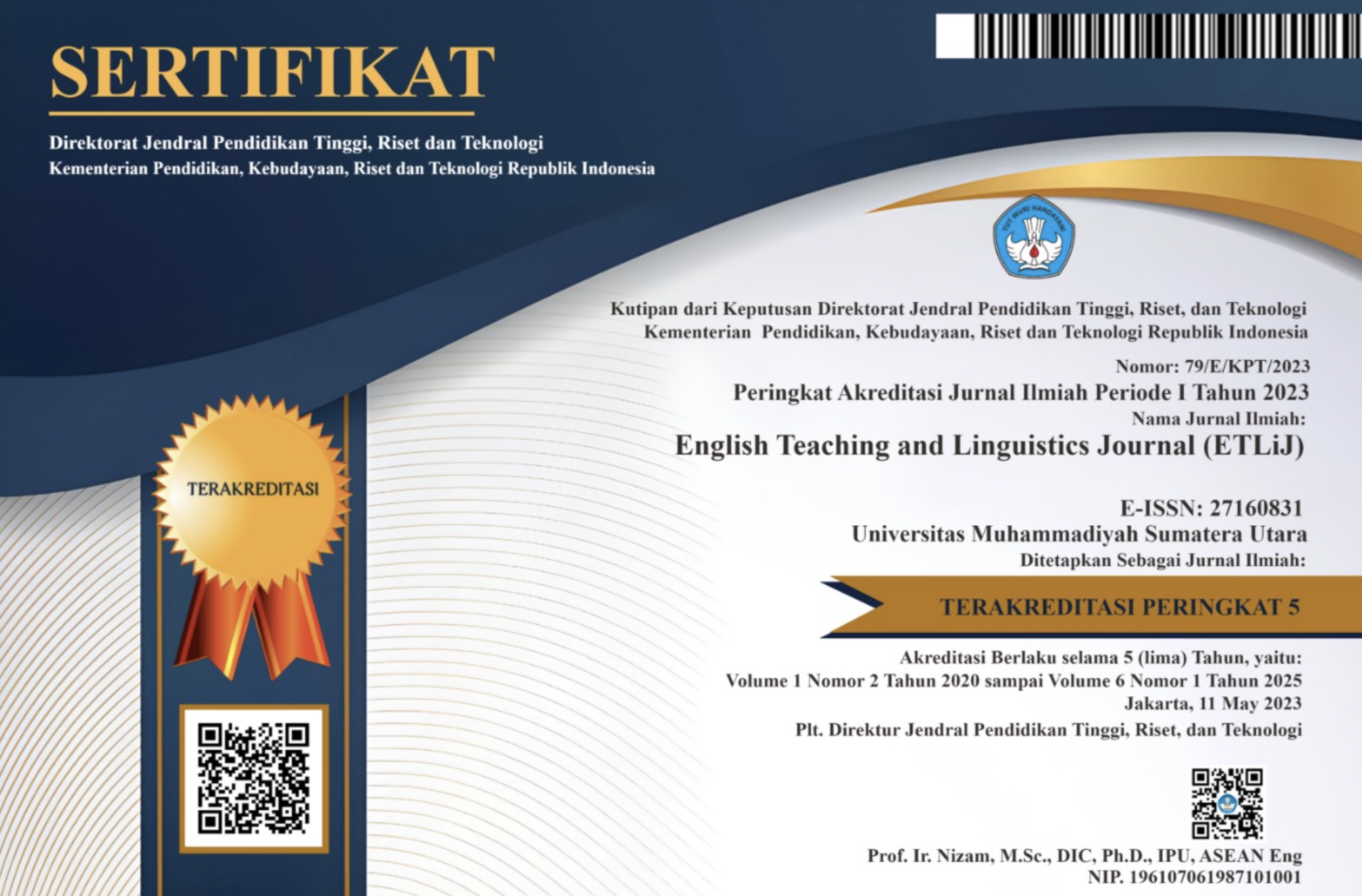Students’ Perception of Using Note-taking in Listening
Abstract
Note taking is an vital academic skill. Van de Meer, (2012) points out that “Note - taking in lectures is often taken to be the distinguishing characteristic of learning at university”. Note-taking brings high effectiveness on comprehension. Kiewra, (1991) indicates that taking notes during lessons helps students understand what is taught easier and then they can reach the objectives of the course more comfortable.
The majority of students have difficulties to follow listening activity. They felt under pressure to understand every word. It means that the students have difficulty in catching the information from the speaker S. Sumihatul,(2012) states many factors that the student feels difficult when studying listening in English, for example: material too fast to be heard to forget what they have heard listen, don't know the meaning of the spoken English word or heard because of the limited English vocabulary they have, not concentrating on the material being heard, not understanding orders explain verbally, lazy in learning or no motivation to learn, and many more factors. As a result, the students have hearing problem and most of them have low motivation to learn listening Moreover, note-taking is also very helpful for students as a strategic way to catch the points of what they listen. The note becomes a material which they use to recall what teachers and professors have explain to them. Milligan (2014) explains note-taking as an effective way in the learning process because through note-taking students can incorporate a lot of sense. For example, students need sharp thinking and listening skills to determine important information to note.
It is known that students need something to help improve their listening skills. Therefore, this study tries to find out the students' perceptions of the use of note taking on their listening skills. It is hoped that by knowing the results of this study, it can be referred to and the information investigated in depth in the future to find some possible strategies that can be recommended to students to improve their listening.
Full Text:
PDFReferences
Clarck, M., Wayland, S., Osthus, P., Brown, K. G., Castle, S., & Ralph, A. (2012). The Effects of Note Taking on Foreign Language Listening Comprehension.
Dewitt, S. (2007). The Effect of Note-Taking and Rehearsal on memory. Journal of Undergraduate psychological Researech, 46-49.
Dunkel, P. 1988. The content of L1 andc L2 students' lecture note and its relation to test performance. TESOLQuarterly, 22, 259-281.
Flowerdew, j. (1994). Academic listening: research perspective.
Gay, L. and P. (2000). Educational Research Competencies for Analysis and Application(NewJersey). In Prentice Hall Company.
Gilakjani, A.P., & Sabouri, N. . (2016). Learners’ listening comprehension difficulties in English language learning: A literature review. English Language Teaching. 123–133.
Gur, T., Dilci, T., Coskun, I. & Delijan, B. (2013). The impact of note-taking while listening Comprehension in a higher education context. International Journal of Academic Research, 5(1), 93–97.
Gur. (2013). The impact of note-taking while listening on listening comprehension in A higher education context. International Journal of Academy Research, 5.1.
Hien, T. . (2015). Difficulties and stategies in listening comprehension. Truong Dai Hoc Lac Hong: Lac Hong University. http://lhu.edu.vn/139/662/difficulties-and-strategies-in-listening
Heaton, J. B. 1990. New York: Writing English language tests. New York: Longman
Kiewra. (1991). A review of note taking: The encodingstorage paradigm and beyond. Educational Psychology Review,. 147–172. https://doi.org/10.1207/s15326985ep2601_3
Kim, Y.-S. G., & Pilcher, H. (2016). What is listening comprehension and what does it take to improve listening comprehension?. In R. Schiff & M. Joshi (Eds.), Handbook of interventions in learning disabilities. 159–174.
Kirkgoz, Y. (2010). promoting students note-taking skill throught task-based learning. 4346–4351.
Lam, P. T. (2021). The Influence Of Note-Taking Technique On EFL Learners’ Listening Comprehension In A Higher Education Contex. International Journals of Sciences and High Technologies, Vol. 25 No, 38–44. http://ijpsat.ijsht‐journals.org/
Makany, T., Kemp, J., & Dror, I, E. (2008). Optimising the use of note-taking as an external cognitive aid for increasing learning. British Journal of Educational Technology, 1–17.
Piolat, A., & Boach, F. (2005). Note-taking and learning: Asummary of research. The WAC Journal, 16.
Robbins, S.P., dan Judge, T. (2013). Organizational Behavior (Fifteenth). Prentice Hall.
Rost, M. (2002). Teaching and researching listening.London. Longman
S. Sumihatul Ummah MS. (2012). Comprehension yang dihadapi oleh mahasiswa semester Iii Tadris. (1), 9–116.
Soumokil, J. C. (2021). Students’ Perception toward the Use of Note-Taking Strategy in Listening Class. Journal of Applied Linguistics, Literature and Culture, Vol. 1, No. https://www.researchgate.net/publication/353844305
Sukma, A. (2020). EXPLORING STUDENTS’ NOTE-TAKING STRATEGIES IN LISTENING TASKS. Universitas Islam Negeri Ar-Raniry.
Suritsky, S. K., and C. A. H. (1991). Benefits of notetaking: Implications for secondary and postsecondary students with learning disabilities. Learning Disabilities Quarterly, 14(1), 7–18.
Van de Meer. (2012). Students’ note-taking challenges in the twenty-frst century: Considerations for teachers and academic staff developers. Teaching in Higher Education,. 13–23. http://dx.doi.org/10.1080/13562517.2011.590974
Yang, Q. (2007). The effects of note taking on TOEFL listening comprehension test for Chinese TOEFL learners. In (Unpublished Master’s Thesis).
Zohrabi, m., & Esfandyari, F. (2014). The impact of note -taking on the improvement of listening comprehension of iranian EFL Learners. International Journal of English Language and Literature Studies.165-175
DOI: https://doi.org/10.30596/etlij.v4i2.16460
Refbacks
- There are currently no refbacks.

This work is licensed under a Creative Commons Attribution 3.0 License
ISSN: 2716-0831





